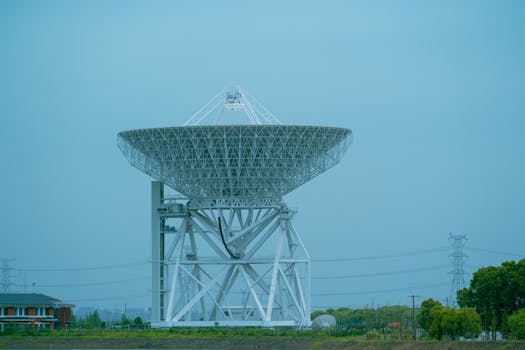
Satellite Telecommunications 2023: What’s New and What’s Next? Satellite Telecommunications
The satellite telecommunications industry is rapidly evolving, with new technologies and innovations emerging in 2023. As the demand for global connectivity and high-speed internet access continues to grow, satellite telecommunications are playing an increasingly important role in bridging the digital divide. In this article, we will explore the latest developments and future trends in the field of satellite telecommunications.
Advances in Satellite Technology
One of the most significant developments in satellite telecommunications is the launch of new satellite constellations. These constellations, such as OneWeb and Starlink, consist of hundreds or even thousands of small satellites that work together to provide global internet coverage. This technology has the potential to revolutionize the way we access the internet, particularly in remote or underserved areas where traditional connectivity options are limited.
Another area of advancement is in the field of satellite broadband. New satellites are being launched with higher throughput capacities, allowing for faster and more reliable internet connections. This is particularly important for applications such as video streaming, online gaming, and virtual reality, which require high-speed and low-latency connections.
5G and Satellite Telecommunications
The rollout of 5G networks is also having a significant impact on the satellite telecommunications industry. 5G networks require a high degree of connectivity and low latency, which can be challenging to achieve in remote or rural areas. Satellite telecommunications can help to fill this gap, providing a cost-effective and efficient way to extend 5G coverage to areas where traditional connectivity options are limited.
In addition, satellite telecommunications are being used to support the development of new 5G use cases, such as IoT (Internet of Things) and mission-critical communications. For example, satellite connectivity can be used to support the deployment of IoT devices in remote areas, such as sensors and tracking devices.
Future Trends and Challenges
As the satellite telecommunications industry continues to evolve, there are several future trends and challenges that need to be addressed. One of the most significant challenges is the issue of space debris, which is becoming an increasingly pressing concern as the number of satellites in orbit grows. There is a need for sustainable and responsible practices in the launch and operation of satellites, to minimize the risk of collisions and other accidents.
Another challenge is the need for greater regulatory clarity and coordination. The satellite telecommunications industry is global in scope, and there is a need for international cooperation and agreement on issues such as spectrum allocation and licensing. This will help to ensure that the industry can continue to grow and develop in a stable and predictable environment.
In conclusion, the satellite telecommunications industry is rapidly evolving, with new technologies and innovations emerging in 2023. As the demand for global connectivity and high-speed internet access continues to grow, satellite telecommunications are playing an increasingly important role in bridging the digital divide. While there are challenges to be addressed, the future of satellite telecommunications is bright, and we can expect to see significant developments and innovations in the years to come.



